French Riviera of the east – Pondicherry
The Puducherry aka Pondicherry tourism board’s ubiquitous advertising campaign seems to be working. In 2019, 1.6 million domestic and international tourists visited this Union territory for rest and recreation
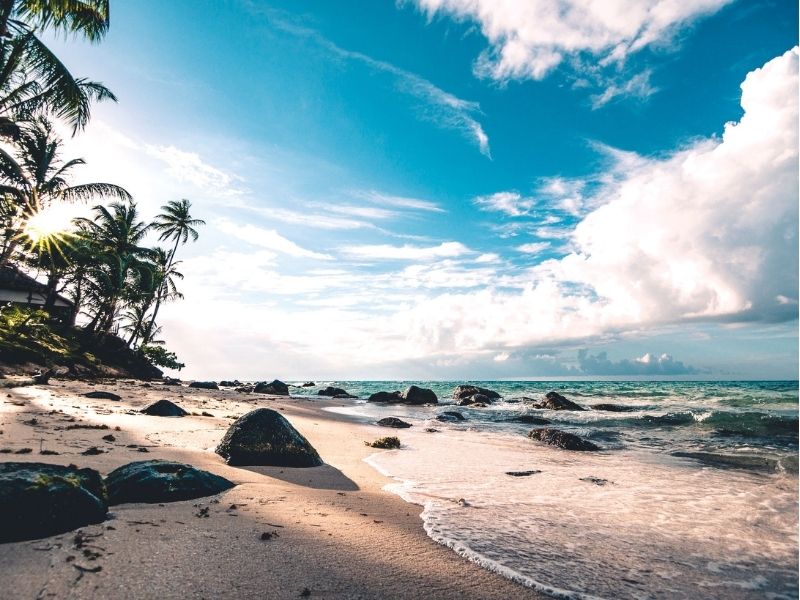
First Goa did it. Next Kerala. Now the tiny Union territory of Puducherry (pop. 1.5 million) seems determined to impact its sun-sand-n-sea assets combined with its unique French heritage (Pondicherry was a France-governed enclave within independent India until 1954) upon domestic and transnational fun-seekers as an ideal get-away-from-it-all tourism destination. In 2019, 1.6 million tourists visited the Union territory for rest and recreation — an impressive inflow for a territory whose total population is just over a million.
Actually the Union territory of Puducherry incorporates Puducherry and Karaikal in Tamil Nadu, Yanam in Andhra Pradesh and Mahe in Kerala. Indisputably the territory’s capital, Puducherry, 162 km south by road from Chennai overlooking the Bay of Bengal, offers a unique Francophone ambience not found anywhere else in India.
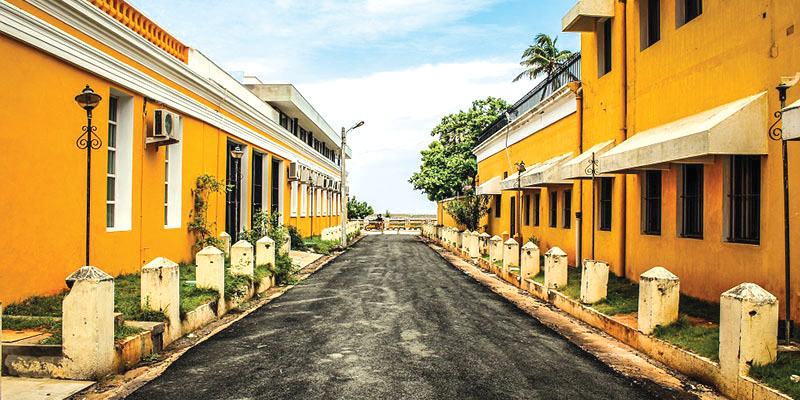 Often described as the French Riviera of the east, Puducherry is a well-planned town — neatly laid roads with grid like streets aligned at right angles, sprawling white sand beaches, beautiful promenades, splendid churches, stately public buildings and statues of Joan of Arc and Joseph Francois Dupleix (the governor of the French colonies in India from 1742-54). Indeed, Pondicherry’s Gallic charm is ubiquitous with roads and squares bearing quaint French names, policemen sporting kepis and restaurants serving French cuisine.
Often described as the French Riviera of the east, Puducherry is a well-planned town — neatly laid roads with grid like streets aligned at right angles, sprawling white sand beaches, beautiful promenades, splendid churches, stately public buildings and statues of Joan of Arc and Joseph Francois Dupleix (the governor of the French colonies in India from 1742-54). Indeed, Pondicherry’s Gallic charm is ubiquitous with roads and squares bearing quaint French names, policemen sporting kepis and restaurants serving French cuisine.
The history of Pondicherry dates back to the Roman era. Excavations at Arikamedu, 6 km from the town, have uncovered remains of a Roman settlement dating between 250 B.C. and 200 A.D. In circa 400 A.D Pondicherry was absorbed into the Pallava kingdom of Kanchipuram. Subsequently, the Cholas of Tanjavur conquered it in over in 1000 A.D and the Pandyas in the 13th century. After a brief period under the Vijayanagar Empire during the late 15th century, Pondicherry attracted the attention of the European maritime powers — first the Portuguese, then the Danes, followed by the Dutch and English and later the French who captured it in 1673.
In 1674 Francois Martin, the first French governor transformed Pondicherry from a small fishing village into a flourishing port town. By the 18th century, Pondicherry was a large and prosperous town thanks to the efforts of able governors like Lenoir, Dumas and Dupleix. But their ambitions clashed with the interests of the British and other local kingdoms of India resulting in skirmishes and political disturbances which continued for a long period. After several fierce Anglo-French battles, sieges and peace treaties, the French acquired permanent control of Pondicherry in 1816 and continued to rule the territory for the next 138 years until 1954, when it was ceded to independent India.
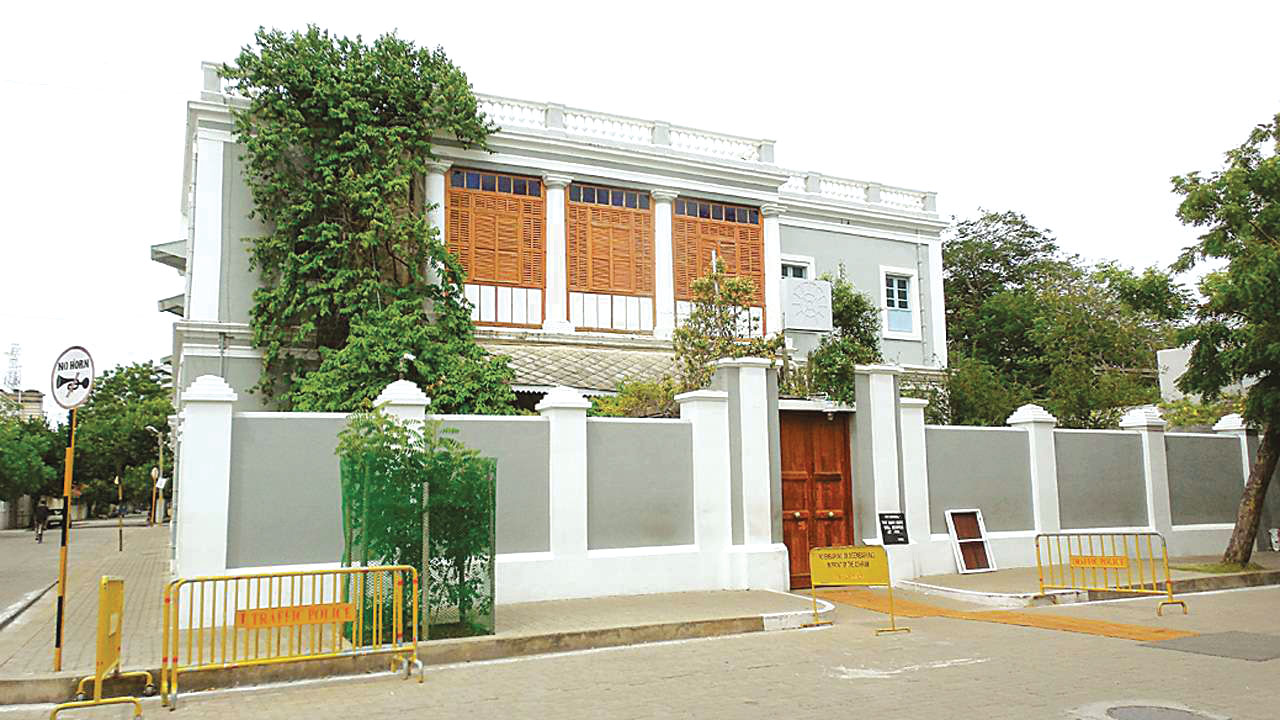
Aurobindo Ashram
Pondicherry’s most well-known institution, the Sri Aurobindo Ashram, founded in 1926 by Sri Aurobindo, a revolutionary-turned-seer from Bengal, is a haven of peace and simplicity. The Mother, a Paris-born painter-musician, took over administration of the ashram in 1950 after Aurobindo’s death and managed it until her death in 1973. Currently, the ashram houses a diversified spiritual community comprising over 2,000 people.
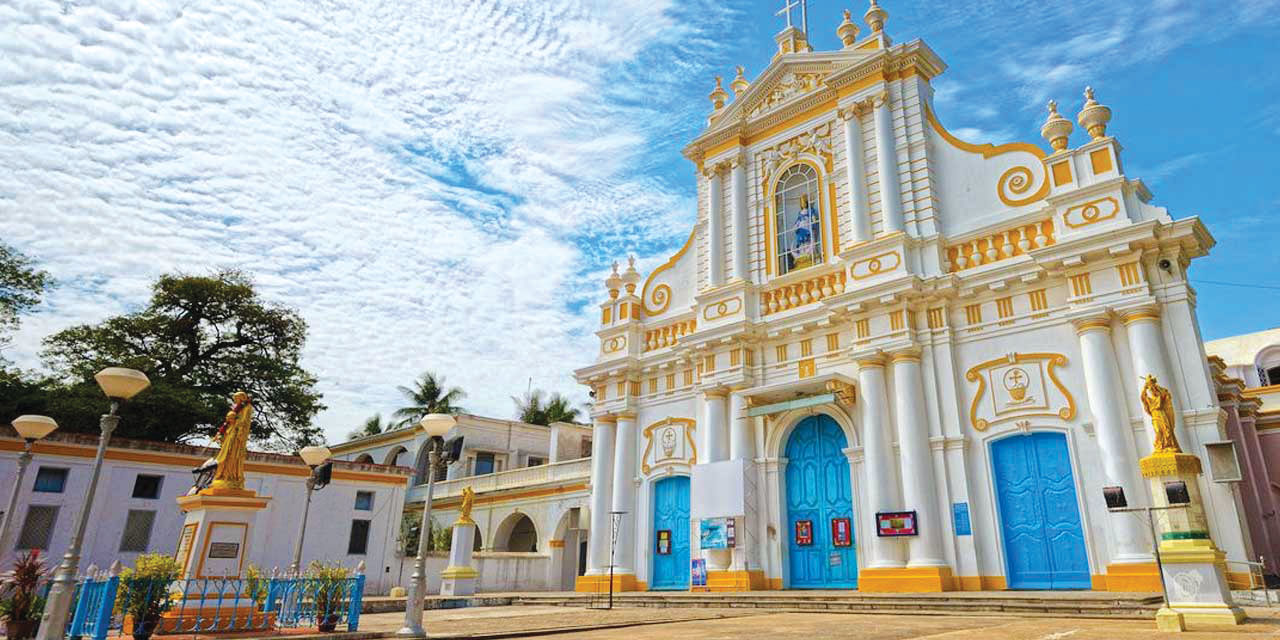
Cathedral Church
Pondicherry is dotted with several grand cathedrals built by the French. Noteworthy among them are the Church of Our Lady of Immaculate Conception built in 1791; the Sacred Heart of Jesus Church famous for its Gothic architecture and stained glass panels and the Eglise de Notre Dame des Anges — a splendid example of Graeco-Roman architecture sited on the edge of the Bay of Bengal.
A visit to Pondicherry would not be complete without a stop at the Sri Aurobindo Handmade Paper Factory — a remarkably successful enterprise that produces quality handmade paper. The Botanical Garden with its wide variety of beautiful flora is well worth a visit.
Shopping. Fine handmade paper is sold from the Sri Aurobindo factory; jewellery, kalamkari drawings, carpets and woodcarvings are available at La Boutique d’Auroville in the city. There is also a state-owned handloom cooperative which offers a range of crafts from Tamil Nadu.
Getting there. Pondicherry is easily accessible by road. Buses depart from Chennai at the Tamil Nadu state express bus stand at Parry’s Corner on a regular basis. The nearest railway station is Villupuram (36 km), which connects to Chennai and Madurai. The Puducherry airport at Lawspet, 8.1 km from Auroville, has scheduled flights and operations of the local flying training school. In 2007, the territorial government expanded the airport to accommodate larger aircraft and commissioned a new terminal building, inaugurated on 18 January, 2013. After four years, the airport was operationalised under the UDAN scheme with a daily flight to Hyderabad airport. Currently, flights from Puducherry airport are not operating. Chennai airport is 135 km from Pondicherry and flights connect to major cities in India and abroad.
Accommodation Ashram Guest Houses. The best places to stay in Pondicherry are the well-maintained but no-frills guest houses run by the Aurobindo Ashram and located in the most attractive parts of the town. Preference is given to ashram devotees; other visitors are accommodated if there are vacancies. However ashram rules apply in all the guest houses, i.e 10.30 p.m curfew and a strict ban on smoking and consumption of alcohol. Moreover, there are no phones, television, or wifi connectivity in the rooms, nor is there provision for room service. Only three Ashram guest houses have the necessary authorisation to register foreign nationals.
Hotels. Top end: Le Pondy (Rs.7,854 per night onwards) Hotel Anandha Inn (Rs.6,848-7731). Mid-range: The Richmond (Rs.3,371); Hotel Tamizh Park (Rs.3,399). Budget: La Maison Radha (Rs.1,568); Hotel Coromandel Heritage (Rs.1,203). Beach Resorts: Ashok Beach Resort (Rs.3,325 onwards); Lamel Cove Beach Resort (Rs. 2,184-2,944), The Dune Eco Village & Spa (Rs.6,579).
Restaurants. Given its mélange of cultures and people, restaurants offer a wide variety of cuisines, including continental, south Indian, north Indian, French, Chinese and Vietnamese. Some of the more popular are Rendezvous, Seagulls Restaurant, Le Club, and Le Café beach restaurant. There are several open-air eateries overlooking the sea, which serve excellent seafood, beer and French delicacies. On the other hand the ashram provides wholesome food four times a day in exchange for meal coupons of Rs.20 each.
Excursions. Pondicherry offers tourists excursions to several contiguous destinations of interest. Among them:
Chunnambar Resort & Water Sports Centre. Sited 8 km from Pondicherry on the Cuddalore road, Chunnambar is flanked by a quiet creek on one side and a sandy beach on the other. The chief attraction here are the tree-top houses on backwater banks. The resort also offers water sports on the backwaters and on Paradise beach. A short, pleasant cruise into the sea to watch dolphins in their natural habitat is a memorable experience.
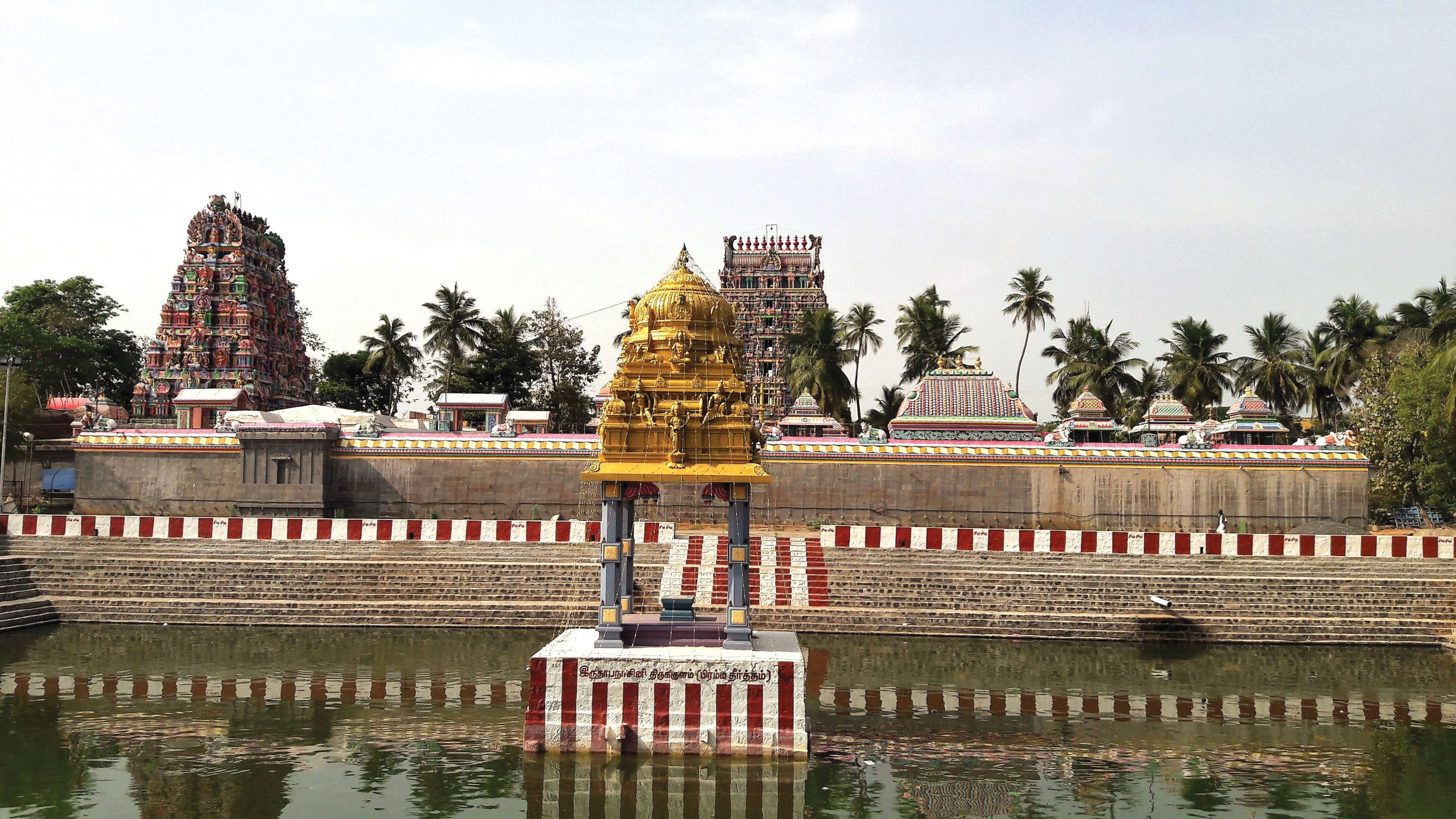
Kameeswarar Temple, Villianur
Villiayanur. Only 9 km from Pondicherry, Villiayanur hosts the beautiful temple of Sri Gokilambal Tirukameswarar built by the Chola kings, circa 1000 A.D. Together with the temples of Veda Puriswarar and Manakulavinayagar nearby, they are fine examples of Chola architecture.
Chidambaram. Located 60 km south of Pondicherry, it is famous for the great temple complex of Nataraja or dancing Shiva — a classic example of Dravidian architecture. The Natyanjali Dance Festival conducted here in February every year attracts performers from across the world.
Gingee. One of the finest forts in India built by the Chola kings, it is 75 km from Pondicherry.
Pichavaram. This seaside resort with its backwaters and mangroves is perfect for leisurely boat rides. There are 4,000 canals and 1,700 islands you can navigate. However Pichavaram doesn’t offer residential accommodation, so it is advisable to make a day trip.

The Matrimandir, Auroville
Auroville. Sited on a low lying plateau 10 km north of Pondicherry and popularly known as ‘the city of dawn’, Auroville was inaugurated in 1968 with the cooperation of many nations at the behest of The Mother. Symbolising an experiment in human unity and international living, Auroville was planned for 50,000 inhabitants but is presently a community of over 2,000 people drawn from nearly 30 countries. Residents live in 14 different communes and speak 55 languages and are engaged in activities such as organic farming, afforestation, education, research, healthcare, small and medium-scale businesses, town planning and community service. Their goal is to evolve into better human beings by combining a life of strenuous physical activity with the discipline born out of spiritual awareness. A must-see in Auroville is the architectural marvel Matrimandir — the meditation hall.
Accommodation. There are several guest houses and hotels providing accommodation to visitors in Auroville. Among them, Purity Guest House (Rs.1,249 per night), Green’s Guest House (Rs.1,837) and Grand Serenaa (Rs.2,204) are the best.
Community living. People with serious interest in the philosophy behind Auroville can reside with any one of the 40 community groups here. A stay — no shorter than a week — is preferred and although voluntary work is not obligatory, it is much appreciated. Note that none of the community groups offer free accommodation in exchange for work. Conditions, facilities and costs depend on the community you stay with. Costs for full board vary from Rs.150-400 per diem within communities.
Restaurants. All of the above hotels offer restaurants and diner facilities. There is only one independent restaurant in Auroville, the cafetaria near the visitors centre which is open daily for lunch and for dinner on Friday and Sunday.
Karaikal
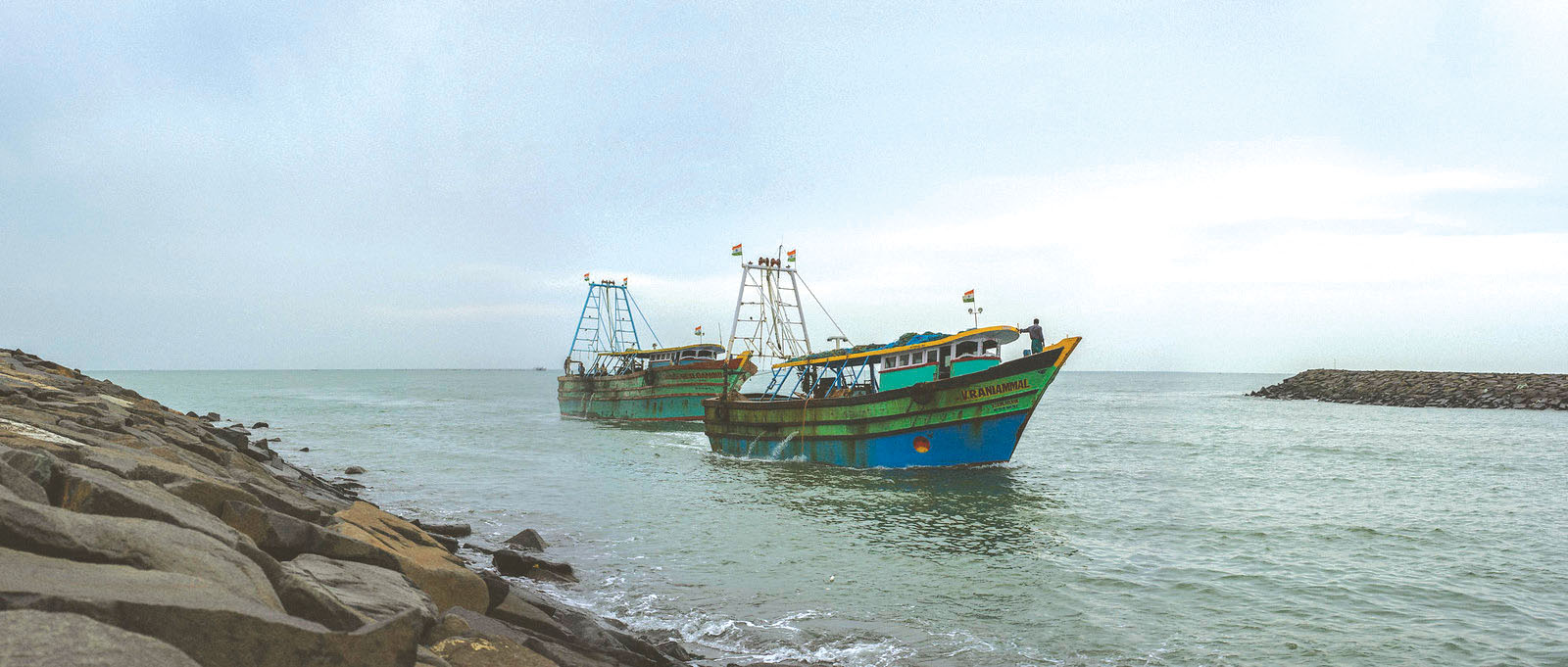
Karaikal Beach
Karaikal is the gateway to several various places of worship on the eastern coast of Tamil Nadu. A temple devoted to Lord Saneeswara (Saturn) is located here; more than 2,000 pilgrims visit this temple every day. Other important shrines are the Shri Darbaranyeswarar temple constructed during the Chola period, the dargah of Mastan Saheb Syed Dawood, and the Velankanni Church. These are famous pilgrim centres of Hindus, Muslims and Christians respectively and are thronged by tourists. Visit the Karaikal Ammaiyar temple on Barathiar Street and the 200-year-old Kailasanathar temple built during French rule, sited nearby.
Accommodation. Karaikal has several hotels offering budget and mid-range accommodation. Among the better ones are City Plaza Lodge, Hotel Paris International and Hotel Presidency.
Restaurants. Hotels such as the Karai Chettinad Palace and Hotel Raman Vegetarian and others such as Pizza & Café Corner, Maja Maja Restaurant etc, serve differing cuisines.
Excursions. Several important Chola temples are scattered around Karaikal. To the west is the Badrakaliyamman temple in Ambagarathur; the Saneeswaran temple (5 km) dedicated to Sri Darbaranyeswarar. Every second year, a great Sanipeyarchi Festival is celebrated and attended by lakhs of pilgrims from across the country. The Jambunatha Swamy temple situated in Neravy is another example of Chola architecture.
Also read: Temple treasures of Tamil Nadu
















Add comment